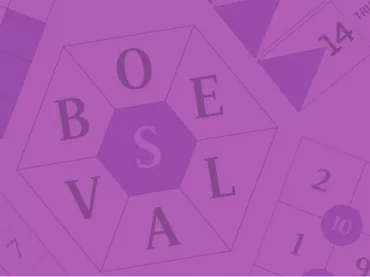About
News UK
Following the launch of The Sunday Times' new Interactive Puzzles microsite on the tablet app, Puzzle Editor David Parfitt examines why puzzles continue to hold such fascination for so many in the digital landscape.
From Ancient Egyptians challenging each other over the Senet board, to today’s commuters tapping away at Candy Crush, we’ve always enjoyed challenging ourselves and others with puzzles and games. The Dutch historian Johan Huizinga even went so far as to recast Homo sapiens as Homo ludens: ‘man the player’. The puzzles available every day in our newspapers are merely the latest manifestation of this same phenomenon.
Among the stark realities served up in other parts of the paper, the puzzles section is a haven of harmony and order. Unlike the latest crisis abroad, each puzzle has a definite solution, and even if you can’t find that tantalising last answer, you can always look it up in tomorrow’s paper. In a turbulent world, puzzles offer a little piece of absorbing escapism.
So what is it about puzzles that make them so engrossing? The basic element of many of our puzzles is the grid: a collection of empty squares into which the solution is entered. These empty squares sit on the paper or screen simply begging to be filled in - the gauntlet has been decisively thrown down. A struggle may then ensue as you attempt to turn white spaces into intelligible answers. And then the moment comes when you complete that last solution and you can look proudly down on your handiwork - the challenge has been met and the puzzle beaten! Solvers often talk of that penny-dropping moment when a troublesome answer suddenly gives way and the key to unlocking the puzzle becomes blissfully clear.
Most good puzzles have simple rules, but contain hidden complexity once solving starts. Sudoku is a great example of this: the rules can be understood in a couple of seconds, but the solving might last the next couple of hours. Here is a perfect recipe for addiction: easy to start, but difficult to stop. However complex the solving process, good puzzles are generally formed from simple elements, and this helps to explain some of their appeal - in a modern world where we are bombarded by information, the straightforward challenge of a puzzle is a welcome anomaly.
Even the infamous Times Crossword is constructed from relatively simple and familiar elements. Part of the interest is then conquering the complexities presented by the clues. This process of learning and improvement can be a source of great intellectual satisfaction across many different puzzle types. Word games allow solvers to revel in the beauty of the English language whilst number puzzles tap into the satisfaction derived from mathematical and logical harmony.
Puzzles have been one of the great success stories of the digital revolution - a quick glance at the App Store’s list of highest-grossing apps amply exemplifies this. It’s no surprise that they have survived the transition so robustly - no matter what the medium, we’ve always loved a good puzzle.


